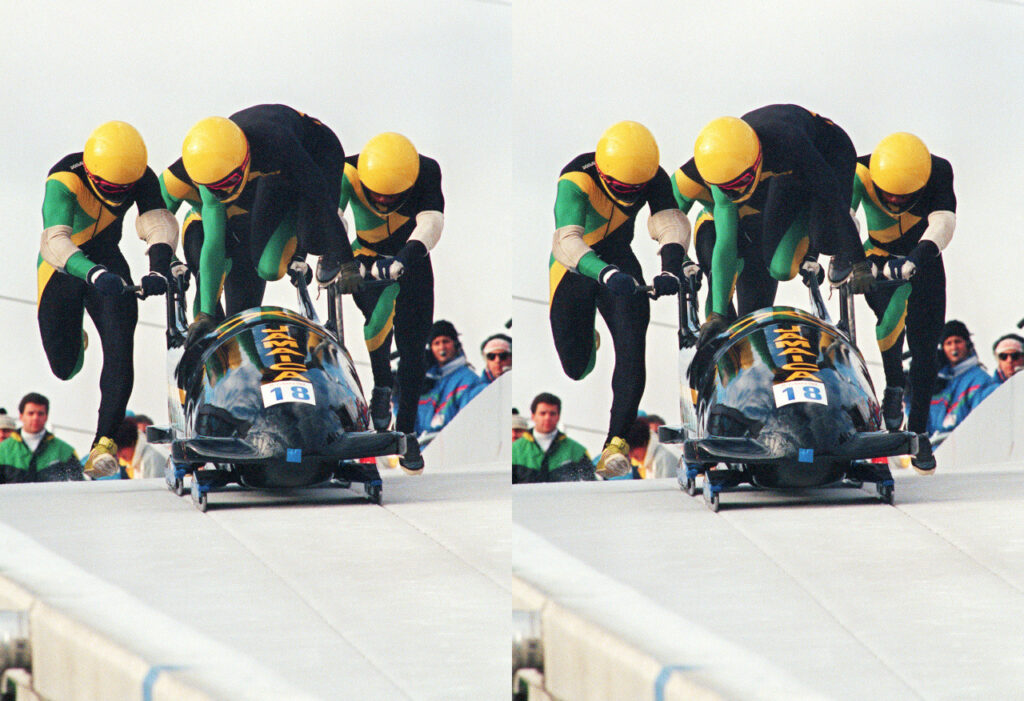YANQING — One of the pioneering Jamaican bobsled team members who first competed at the 1988 Winter Games and inspired the movie “Cool Runnings” has big plans for racers from the Caribbean island at future Olympics.
Thirty-four years ago, Chris Stokes only planned to travel to the Calgary Winter Olympics to watch his brother Dudley pilot the four-man team and carry the national flag at the opening ceremony.
However, when one of the original team got injured, Stokes stepped in at the last minute and the Jamaican team went on to become the darlings of the 1988 Games.
Stokes is now 58 and has been president of the Jamaican Bobsleigh Federation since 1995 — and no-one has done more to promote the sport in the unlikely setting of the Caribbean island.
Under his guidance, Jamaica has qualified for three bobsleigh events at the Beijing Games this month, including the two-man, women’s monobob and has sent a four-man bob for the first time since Nagano 1998, which was Stokes’ last Olympics.
Yet he stumbled into the sport almost by accident.
“My brother invited me to Calgary to watch, but what I didn’t know was that there was a plot to get me to try the sport, because of an injury,” Stokes told AFP at the venue for the Beijing bobsleigh events.
“I had a background in sprinting and sat in a bobsleigh for the first time on the Monday.
“I found it exhilarating and by the following weekend, I was in my first Olympic race. “It wasn’t even a week!”
– ‘It defined my life’ –
The Jamaican bob dropped out of the competition in Calgary after crashing on the third of four runs.
Yet the heart-warming story of the Jamaicans defying the odds inspired the 1993 hit movie “Cool Runnings”.
“It defined my life in a lot of ways,” admits Stokes, who ended up racing at five Winter Games.
“I will forever be associated with that 1988 legendary team and the movie ‘Cool Runnings’.”
The film tells the against-all-odds story of how the Jamaicans overcame a shoestring budget — and a lack of ice at home where temperatures average 30 degrees Celsius (86 degrees Fahrenheit) even in winter — to fulfil their Olympic dream.
“It wasn’t a documentary. It was a Hollywood movie, but you experience the emotions and the challenges that we went through. It was a fine piece of story-telling,” he said.
A memorable scene depicts the four-man team jumping into a bath tub to replicate loading a bobsleigh.
In another, one of them climbs into a freezer to prepare for cold temperatures.
“We never jumped into a bath tub, nor a freezer, but we had to do unusual things to prepare,” said Stokes.
He said the original team used a wooden crate, not a bath tub, to practise getting into the bobsleigh: “We just had to make do.”
Stokes feels Jamaican athletes are a perfect fit for bobsleigh.
“The cold is incidental,” he explains.
“Bobsleigh is really about speed, power and hand-eye coordination — we’re good at that.
“Obviously, we have an issue because time on ice is expensive and difficult for us, which is the real barrier.”
– Medal plans –
He says Jamaica‘s current bobsleigh programme, which includes a winter training base in the US, is like “night and day” compared to its humble “Cool Runnings” origins.
“We have a professional administration to manage the brand and generate revenue,” he said.
“That helps to fund coaching, recruitment, training programmes, physiotherapy treatment, insurance, travel plans.
“It has grown not large in terms of size, but very professional in terms of organisation.”
No Jamaican crew has ever finished higher than 14th at a Winter Olympics.
In Beijing, Stokes wants “solid results which show an upward trajectory”, but he has high hopes for future Winter Olympics.
“Our big plan for 2026 is to qualify for four events, two teams per event, and to have someone on the podium in 2030,” he said.
Shanwayne Stephens will pilot both the Jamaican two and four-man bobs at the Beijing Games and was inspired by Stokes and the 1988 crew.
“They are bunch of really good guys, they have told me some really crazy stories from back in the day,” laughed Stephens.
“Technology wasn’t the same in the sleds as it is today – I don’t know how they did it.”



